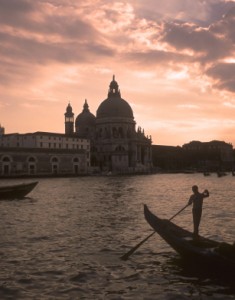 James Strickland started the original company that is now Strickland’s Home as a wooden Venetian blind manufacturer in 1942, but the history of Venetian blinds are thought to date all the way back to Persia and possibly even ancient Egypt.
James Strickland started the original company that is now Strickland’s Home as a wooden Venetian blind manufacturer in 1942, but the history of Venetian blinds are thought to date all the way back to Persia and possibly even ancient Egypt.
It is believed that the early Venetians, who were great traders, brought the idea of the blind from Persia to Venice. Then, freed Venetian slaves brought the blind to France, not only for their personal comfort, but also as a means of livelihood.
Wherever their birthplace, Venetian blinds have served as decorative window treatments for nearly three centuries. One of the earliest records of the window treatment in America was the fitting of Venetian blinds at St. Peter’s Church in Philadelphia in 1761. John Webster, an upholsterer from London , was the first pioneers of the Venetian blind in the United States. He placed the first known print advertisement for wooden blinds in the “New World” on August 20, 1767 in the Pennsylvania Journal and Weekly Advertiser. It read:
“…the newest invented Venetian Sun Blinds for windows, on the best principles, stain’d to any color, moves to any position, so as to give different light, screens from the scorching rays of the sun, draws a cool air in hot weather, draws up as a curtain, and prevents being overlooked, and is the greatest preserver of furniture of anything of the kind ever invented…”
In 1787, Venetian blinds then appeared in a painting by J. L. Gerome Ferris, entitled “The Visit of Paul Jones to the Constitutional Convention”. Other illustrations show Venetian blinds at Independence Hall in Philadelphia during the signing of the Declaration of Independence. At the turn of the 20th Century, the Rockefeller Center RCA Building (better known as the Radio City Building) in New York City was the first large modern building in the United States to feature Venetian blinds.
Because of its technical improvements over cloth shading systems, the Venetian blind is thought to have grown in popularity. They were more durable, easier to operate and more economical—no wonder they became so popular!
The use of blinds with minimal draperies or no draperies at all is not difficult to understand. In Williamsburg, drapery fabric (as well as many other commodities) came from England and carried a stout tax. The Colonists’ resentment toward England and her taxes made wooden blinds a sensible alternative to fabric window coverings. Because of the prolific use of walnut blinds during the period, it is thought that wooden blinds were produced locally, out of scraps, as a sideline to the furniture industry.
The bold, distinguished lines of Georgian Architecture are ideally suited to the wooden blind, making Venetian blinds a window treatment throughout the Georgian Period (1714 – 1811) in the Eastern United States. The Federal Period (1790 – 1830) saw a slight modification in design, with a lighter, more delicate look than the preceding Georgian style. Nonetheless, the essential design of windows and Venetian blind window treatments became a staple in American design.
Although walnut or natural finish blinds were popular in Colonial times, white or stone color blinds were considered more elegant and fashionable during the Federal Period. Blinds were typically painted dark green or painted to match the color of the window casements.
In the 1850’s, with the approach of the Victorian Era (1837 – 1901), architecture became much more ornate. Since decorative ornamentation was the order of the day, operable louver bi-fold shutters became fashionable as an interior decorating choice in studies and libraries.
It was not until the 1940’s, at the time Strickland’s Home was founded, that the blinds industry adapted a major change– the introduction of the metal slat. Later, in the early seventies, the mini-blind was introduced, creating another major decoration shift. Today, everything old is new again as decorative trends have led to a resurgence and a newfound popularity in the wooden Venetian blind.
Credits: Information for this article was compiled from www.mae.ncsu.edu and DeVenco – A Historical Perspective of Wooden Blinds & Shutters.